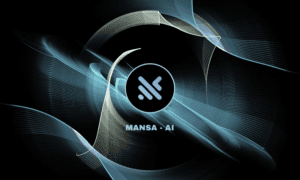Terms like “Generative AI” and “Large Language Models” (LLMS) have been abounding in the tech scene lately. Many experts and corporate executives are left asking: Are generative AI and LLMS the same thing? More crucially yet, how do they affect sectors and shape digital transformation?
Not just tech aficionados but also decision-makers trying to maximize the potential of artificial intelligence depend on an awareness of the differences between these words. This blog aims to demystify these concepts, discuss LLM vs generative AI, clarify their significance, and offer guidance for companies seeking to capitalize on the AI revolution.
Is Generative AI the Same as LLM?
Although they are closely related, generative artificial intelligence and LLMS are distinct, even though the two terms are often used interchangeably.
As per the Generative AI definition, Generative artificial intelligence is a more general type of AI system able to produce new content—text, pictures, audio, video, or code. It replicates human creativity by creating unique outputs from learnt patterns. Under this heading are applications like picture generators, music creation tools, and AI-powered video editors.
If you want to know the exact large language models definition, these are a subset of generative artificial intelligence, especially trained on vast text corpora to grasp, analyse, and produce human-like language. Text-based AI projects as Google Bard and Chatgpt are driven by LLMS.
So, although all LLMS are generative AI, not all generative AI systems are LLMS. You can read Generative ai vs LLM vs GPT to understand the different more clearly.
What is the Key Role of LLM in Generative AI?
Large Language Models (LLMS) are the driving engines behind generative AI systems, particularly in text-based generation. Their primary task is to comprehend the context, grammar, semantics, and user purpose, thereby producing human-like language.
Massive corpora of text data—from books and articles to websites and conversations—are used for training large language models (LLMS). This instruction helps children to identify linguistic patterns and remarkably fluidly anticipate the next word, phrase, or paragraph. LLMS lets computers produce coherent, contextually relevant, grammatically correct new material when included in generative artificial intelligence systems.
Still, their contribution goes well beyond simple word production. LLMS drive many generative artificial intelligence applications, including:
- Conversational AI: enabling realistic chatbots and virtual assistants
- Content creation: writing blogs, reports, summaries, and scripts
- Code generation: producing functional code snippets for developers
- Language translation and localisation
- Question answering and knowledge retrieval
LLMS are essentially the general intelligence layer of generative artificial intelligence. They are crucial for uses requiring creativity, flexibility, and sophisticated knowledge of human language as they provide fresh outputs based on acquired knowledge rather than just repeating information.
The main function of LLMS becomes even clearer as generative artificial intelligence spreads over sectors: they are the basis upon which AI can think, interact, and create just as (and occasionally better than) a human.
Is ChatGPT LLM or Generative AI?
The reply is—both. Run by a Large Language Model (LLM), ChatGPT is a Generative AI tool. Combining the intellect of LLMS with the powers of generative artificial intelligence, it sits at the junction of these two concepts to provide human-like dialogues, content production, and problem-solving.
Fundamentally, ChatGPT is based on GPT (Generative Pre-trained Transformer) models developed by Openai—very sophisticated LLMS trained on enormous volumes of textual data. These models let ChatGPT create fluent, meaningful answers, comprehend user input, and grasp context. ChatGPT’s “brain” is this LLM.
Where generative artificial intelligence finds application is in ChatGPT’s implementation. Being a generative artificial intelligence tool, ChatGPT can:
- Generate original content (emails, blogs, poems, stories)
- Translate languages
- Answer complex questions
- Write and debug code
- Simulate human conversation
This combo lets ChatGPT be considerably more than a search engine or FAQ bot. It can create context-aware, creative, and useful output in real time—hallmarks of generative AI.
ChatGPT is therefore a product driven by an LLM, particularly designed to perform generative tasks, even though it is not an LLM itself. It demonstrates how generative artificial intelligence tools are driven by LLMS, which transform Un processable data into intelligent and practical applications.
If you compare Generative AI vs Large Language Models, you can say the ChatGPT is equal to Generative AI tool driven by an LLM.
This is why it is often the poster child for what is feasible with large-scale artificial intelligence today.
What Are Large Language Models in Generative AI?
Designed to comprehend, interpret, and synthesis human language, large language models (LLMS) are a specific subset of artificial intelligence models. Within the field of generative artificial intelligence, LLMS provides the linguistic basis for computers to generate human-like writing with fluency and contextual awareness.
Massive datasets, including books, papers, webpages, and other textual data, train these algorithms. LLMS learn patterns, language, facts, and even thinking via deep learning, especially transformer architectures. The word “large” describes the scope of these models, which often include billions or even trillions of parameters. These settings enable the model to construct coherent stories, predict the next word in a phrase, or respond to complex inquiries.
LLMS are strong in generative artificial intelligence because they can create fresh content, from writing blog entries and emails to coding or summarising legal documents, instead of regurgitating knowledge. Their outputs are highly configurable and can be fine-tuned for specific industries or applications.
Popular examples of LLMS include OpenAI’s GPT series, Google’s Palm, Meta’s LLaMA, and Anthropic’s Claude. Many contemporary apps as ChatGPT, Bing AI, and Bard, have their backbone built on these models.
LLMS are, all things considered, the clever engines driving text-based generative artificial intelligence. They are essential LLMS and generative AI tools for companies, developers, and artists trying to apply artificial intelligence for language-driven chores as they convert user input into relevant, contextually suitable material.
How Large Language Model AI is Transforming Industries Beyond Tech?
Although Large Language Models (LLMS) first generated waves in the IT industry, their influence has quickly spread across a broad spectrum of businesses, changing processes, enhancing decision-making, and developing new consumer experiences.
Healthcare
LLMS supports medical research summarisation, patient report production, and automated clinical documentation in the medical profession. Reducing the load on healthcare workers, AI-powered virtual assistants now aid patients in scheduling appointments, obtaining prescription information, and receiving treatment recommendations.
Finance
For automated financial analysis, fraud detection, and customer service chatbots, banks and other financial companies use LLMS. By interpreting complex financial data and generating reports, these models save analysts many hours of manual labour.
Legal
Legal departments and law firms utilise LLMS to review contracts, compile case law, and draft legal documents. AI solutions enable attorneys to focus on strategy by significantly reducing the time spent on due diligence and repetitive paperwork.
Education
In the classroom, LLMS drive interactive learning environments, automated grading, and individualised tutoring. Real-time help and comments suited to their learning speed and style help students.
Retail & eCommerce
LLMS creates support for AI-driven recommendation systems, answers consumer questions, and provides product descriptions. They customise the online buying process, thereby improving customer satisfaction and increasing sales.
LLMS are not only improving current processes across many sectors; they are also allowing whole new types of engagement, creativity, and value generation well beyond conventional tech contexts.
Why Every Business Needs to Invest in Generative AI Development?
Companies that fail to innovate fall behind in today’s fast-paced digital economy. Not just a term, generative artificial intelligence is a potent tool for change, allowing businesses to automate tasks, customise experiences, and open new revenue streams. Investing in the development of generative artificial intelligence is quickly becoming a strategic necessity, regardless of your sector or size.
- Automate and Accelerate Workflows
Content creation, report writing, customer correspondence, and data summarising are among the time-consuming chores that generative artificial intelligence can handle. Reducing labour expenses and mistakes, this automation greatly increases operational efficiency.
- Enhance Customer Experience
Virtual assistants and LLM-powered chatbots let companies provide 24/7 customised customer assistance. Greater pleasure and loyalty follow from AI’s accurate, human-like replies, understanding of consumer questions, and learning from encounters.
- Drive Innovation and Creativity
Generative artificial intelligence techniques help brainstorming and ideation in anything from marketing campaigns to product creation. They enable scalability and speed of innovation by helping teams get from concept to implementation more quickly.
- Make Smarter Decisions
Trained on domain-specific data, AI models can analyse trends, project results, and offer strategic insights, thereby arming decision-makers with real-time intelligence that provides a competitive edge.
- Future-Proof Your Business
Using artificial intelligence today helps your business grow long. Early adopters will have the infrastructure and agility needed to incorporate new capabilities and remain competitive as artificial intelligence technologies evolve.
- Improve ROI
Businesses that engage in generative AI generally find a notable return on investment, both in the short term and long term, due to improved processes, lower costs, and increased engagement.
In summary, generative AI isn’t simply a tool—it’s a revolutionary force that every forward-thinking firm should be using now.
How to Select the Right Generative AI Development Company for Your Project?
Ensuring your AI-powered project’s success depends critically on selecting the right generative artificial intelligence development firm. Businesses require a partner that not only understands the technology but also aligns with their industry objectives and ambitions, given the rapid expansion of artificial intelligence capabilities. These main elements should help you decide:
- Proven Expertise in Generative AI and LLMS
Search for a firm employing generative artificial intelligence and large language models (LLMS) like GPT, Palm, or LLaMA with a solid portfolio in creating and delivering solutions.
- Industry-Specific Experience
Every sector has different difficulties. Whether in healthcare, banking, retail, or education, a development partner knowledgeable about your industry can better identify your needs and provide customised artificial intelligence solutions.
- Customisation and Scalability
Tools for off-the-shelf artificial intelligence may be restricted. Select a provider that provides scalable infrastructure, versatile APIS, and totally configurable models to develop with your organisation over time.
- Data Security and Compliance
Often, artificial intelligence systems handle sensitive personal information. Ensure that the business complies with relevant regulations, such as GDPR, HIPAA, or ISO standards, and employs rigorous data security practices.
- Full-Cycle Development & Support
From project planning and model training to deployment, monitoring, and continuous support—end-to-end services are what a competent AI partner offers. After launch, maintenance ensures that your solution remains current and accurate.
- Transparent Communication
Effective teamwork requires openness, regular updates, and a shared goal. Please select a team that listens to your ideas, clearly expresses itself, and changes with the course of your project.
Selecting the appropriate generative AI development business may be the difference between a successful transformation and an expensive misstep, so examine critically.
Why Choose Sapphire for the Generative AI Development Services?
Selecting the correct development partner is more critical than ever as companies rush to use artificial intelligence. Providing creative, safe, and scalable solutions tailored to your specific company objectives, Sapphire Software Solutions is a trusted leader in bespoke generative artificial intelligence development.
- Deep Expertise in LLMS & Generative AI
Our speciality at Sapphire is creating cutting-edge generative artificial intelligence systems driven by modern Large Language Models like GPT-4, Palm, LLaMA, and Claude. We provide in-depth subject knowledge and technological expertise to every project, whether that involves building intelligent chatbots, automating processes, or creating AI content generators. Our experts have completed the highest-level Generative AI course and gained experience in this field for a decade.
- Industry-Tailored Solutions
Every sector has demands, as we are aware. We therefore provide tailored AI solutions for industries such as healthcare, finance, education, legal, and e-commerce, thereby guaranteeing relevance, compliance, and a quantifiable return on investment. We keep up with the latest trends and large language models survey to make sure we develop the most recent solutions.
- Secure and Compliant Development
Data privacy and regulatory compliance are at the foundation of our development procedures. To safeguard your vital corporate data, our systems comply with GDPR, HIPAA, and ISO standards and adhere to the latest security practices.
- Scalable Architecture
Whether your company is a startup seeking an MVP or an enterprise requiring robust artificial intelligence infrastructure, Sapphire creates solutions that scale with your business.
- Full-Cycle Support
From ideation and model training to deployment and post-launch optimisation, we provide generative AI development services, ensuring long-term success and adaptability as your company develops.
- Transparent Communication & Collaboration
We believe in rapid cooperation and open, continuous communication. Our staff continuously updates you at all levels and responds instantly to your comments.
Work with Sapphire to fully realise Generative AI and drive innovation, efficiency, and expansion within your company.
Conclusion
Understanding the distinction between generative AI and Large Language Models (LLMS) is crucial in today’s rapidly evolving digital ecosystem. While generative artificial intelligence encompasses a wider range, including visual, audio, and language-based content generation, LLMS are the linguistic engines driving many generative AI applications.
For companies, this difference is strategic rather than just intellectual. Organisations can transform their operations, interact with consumers like never before, and flourish in an AI-driven environment by choosing the appropriate artificial intelligence technology and collaborating with a seasoned Generative AI Development Company like Sapphire Software Solutions.





























